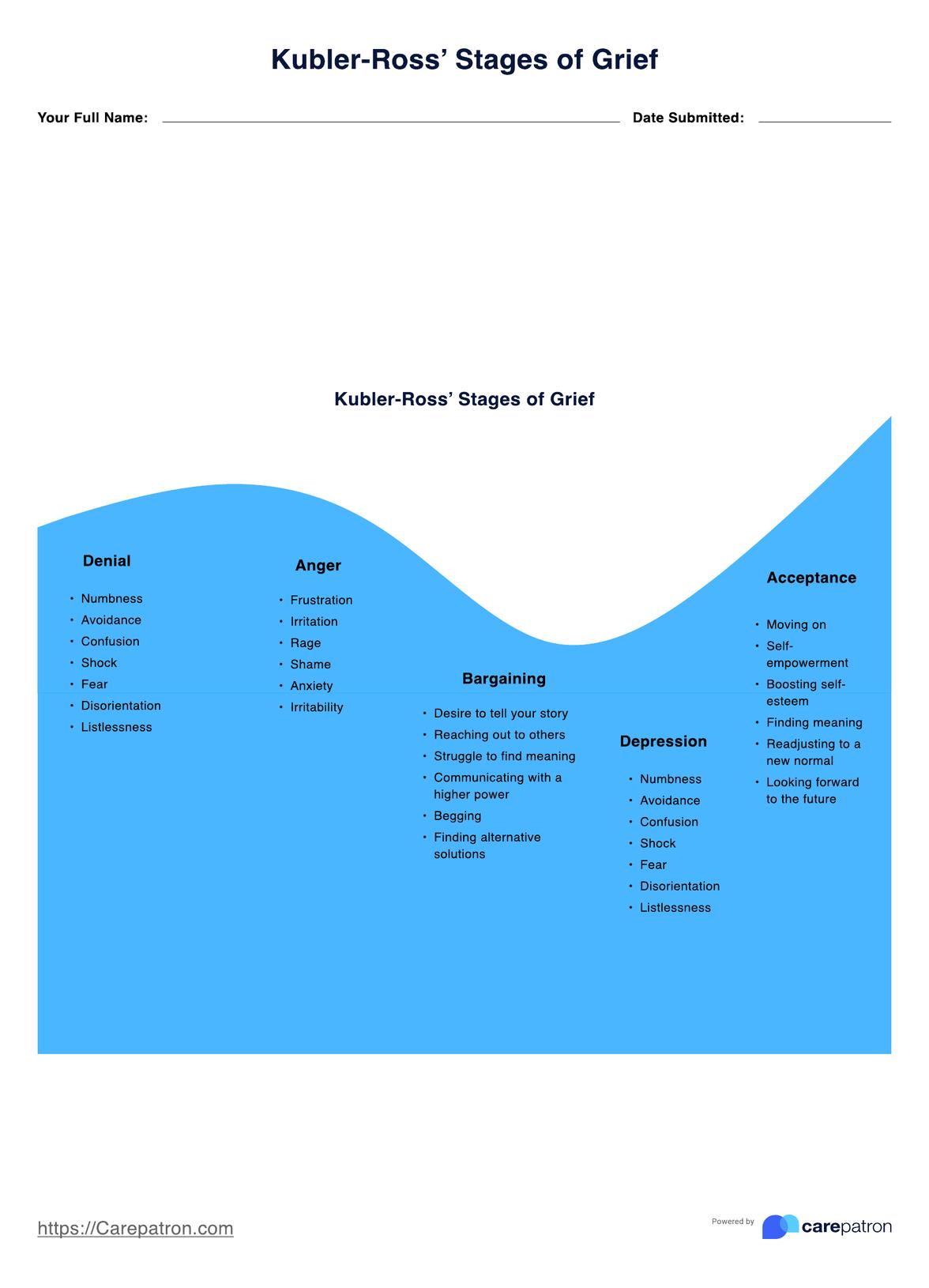Psychologists, psychiatrists, therapists, counselors, students. Anyone, really.

Stages of Grief Chart
Use the Stages of Grief Chart when educating students or patients about the stages of grief that people go through when they experience loss. Explore the stages of grief, and work towards better understanding you or someone else's journey.
Use Template
Stages of Grief Chart Template
Commonly asked questions
It is based on Kübler-Ross' framework for grief.
This is subjective, meaning the most difficult stage of grief can differ from person to person.
EHR and practice management software
Get started for free
*No credit card required
Free
$0/usd
Unlimited clients
Telehealth
1GB of storage
Client portal text
Automated billing and online payments











